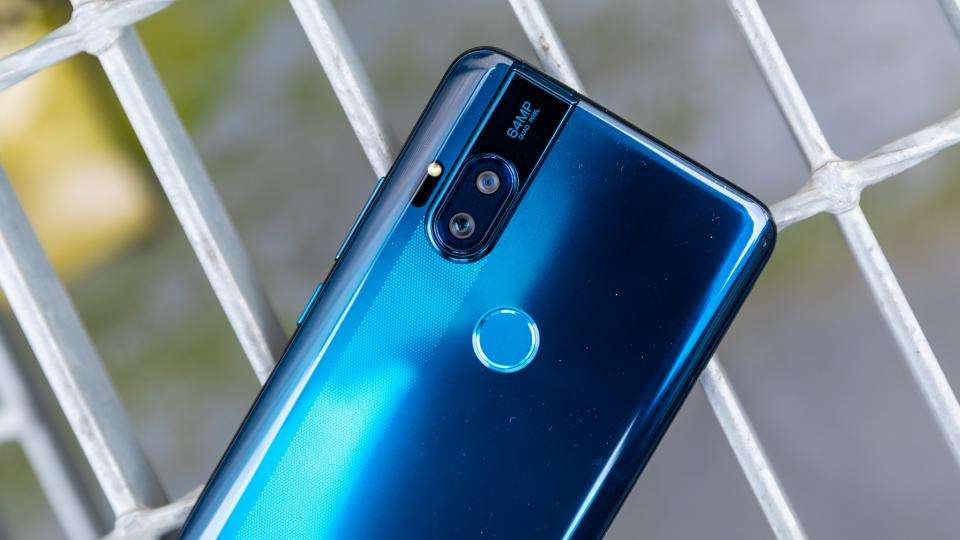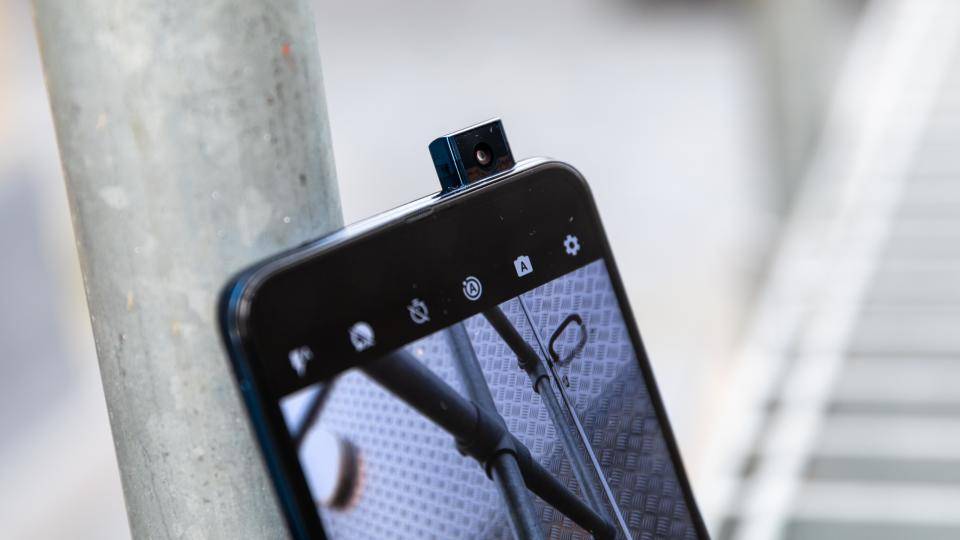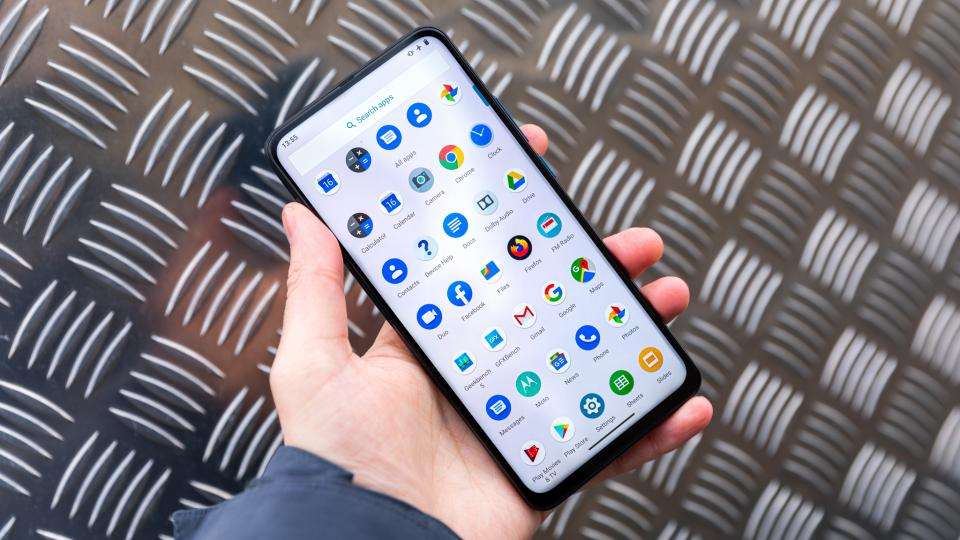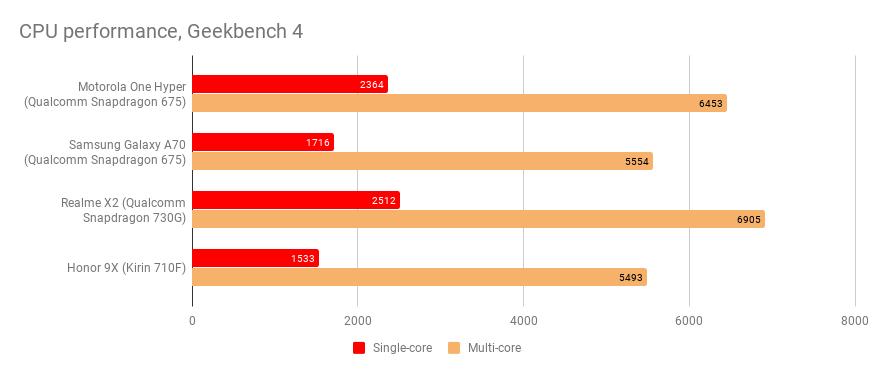Motorola’s budget smartphones have been common pocket companions for years now, but its higher-priced lineup is dangerously dwindling in popularity. Take a quick trip on a bus or Tube in the capital, for instance, and aside from the usual sightings of iPhones and Samsungs, the keen-eyed commuter will spot plenty of Moto G-series phones. The elusive Moto “flagships”, however, remain out of sight.
READ NEXT: Best mid-range smartphone
A sub-£200 phone is a more tempting proposition, of course, but there’s no lack of choice for those that want to spend a little bit more for some extra features. Motorola’s “One” range – which is a separate lineup that costs a bit more – is already filled with handsets, so is there really any point in releasing another so soon after the last one ?
Buy Motorola One Hyper now
Motorola One Hyper review: What you need to know
I say this rather tentatively, but the short answer is yes. As is customary, the new Motorola One Hyper has a unique attribute that’s missing from the rest of the range, and in this case, that's 45W fast charging. This does come with a major caveat however, which I’ll discuss later in this review.

Elsewhere, the Moto One Hyper isn’t anything out of the ordinary. It has a 6.5in screen which is completely notch-free thanks to the 32-megapixel pop-up selfie camera, and this is accompanied by dual rear cameras. Motorola has also employed a year-old Qualcomm Snapdragon 675 processor as well as 4GB of RAM and 128GB of expandable storage.
Motorola One Hyper review: Price and competition
That’s par for the course of what you can expect from a mid-range phone these days – fast charging capabilities notwithstanding – but at £270 SIM-free you can’t really grumble too much.
You can, however, begin to question whether the One Hyper might be a bit overpriced when you compare it with the rest of the market. The Xiaomi Redmi Note 8T offers similar levels of specification for around £100 less, and you can also save a bit of money by opting for the Moto G8 Plus instead.
Buy Motorola One Hyper now
As for phones at a similar price, we’ve recently reviewed the Realme X2 and Honor 9X , both of which cost around £250. The Hyper also faces challenges from within its own ranks: the One Vision – which has a large display and 48-megapixel camera – also costs £270.
Motorola One Hyper review: Design and key features
That final comparison is especially interesting, because when the Vision launched in May last year it was sold as “the one with the big screen”. It’s still a big screen, of course, but the One Hyper’s display is actually 0.2in larger across the diagonal, and there’s no obtrusive screen notch either.

To my memory, this is the first all-screen Motorola phone ever released. The Vision’s selfie camera was housed in a small hole-punch notch in the top-left corner, and the One Macro had a teardrop notch, but the One Hyper is obstruction-free. It isn’t entirely borderless – there’s a rather chunky chin bezel, in particular – but for the money, you can’t do much better.
The aesthetic accomplishments also extend to the back of the phone. The shimmering, turquoise ‘Deep Sea Blue’ review model I have in my hand reminds me of the sun’s rays bouncing off small waves in the open ocean (alright, Wordsworth – Ed.). You can also choose the ‘Fresh Orchid’ colour, – which sounds more like an air freshener – but it doesn’t remind me of school holidays spent skipping stones off the coast of Cromer, so I don’t think it looks quite as nice.
You won’t be surprised to find a pair of cameras on the rear, which are arranged vertically and protrude just far enough that the One Hyper is a bit wobbly when placed on a flat surface. There’s also a circular fingerprint reader for secure unlocking, as well as the usual accoutrements on the side of the phone, including the volume rocker, power button, SIM/microSD tray, USB Type-C charging port and 3.5mm headphone jack.
Motorola One Hyper review: Display
How about that big ol’ screen then? Well, it’s not unexpected that this is an IPS effort, with a long-tall resolution of 2,340 x 1,080 and a total pixel density of 396ppi. As usual, there are three display modes to choose from – tripling my benchmarking time – each offering varying levels of colour tweaks and saturation.

While running our usual display testing procedures, I found that the Moto One Hyper was capable of delivering a maximum brightness of 463cd/m2, which is bright enough for a well-lit office, or blustery winter’s day, but not quite bright enough to read in sunnier climates without squinting.
As for colour accuracy, the One Hyper produced 88% of the sRGB colour gamut, with a total volume of 91%. An average Delta E of 2.17 is also pretty good for the price – only struggling with brown and dark red colour tones – and a contrast ratio of 1,461:1 is equally good.
Buy Motorola One Hyper now
Motorola One Hyper review: Performance, battery life and fast charging
As I mentioned earlier, the One Hyper is fitted with a year-old Qualcomm Snapdragon 675 processor, which is paired with 4GB of RAM. Considering the price, this isn’t the fastest chipset we’ve seen, clocking in at a “measly” 2GHz. Some of Xiaomi’s efforts manage to squeeze in higher-powered internals for less, but it does the job here.
In fact, the Moto performed admirably in the Geekbench 4 CPU tests, scoring 2,364 in single-core and 6,453 in multi-core processing. That only puts it slightly behind the Realme X2 (which uses a faster Snapdragon 730G) but well ahead of both the Samsung Galaxy A70 and Honor 9X.

The Moto One Hyper proved to be as equally adept at handling graphics processing without any major hiccups too. In the GFXBench Manhattan 3.0 on-screen test, it managed an average frame rate of 21fps, which is slightly higher than I would expect at this price. However, as is the case with CPU performance, this result isn’t as good as what the Realme X2 managed to achieve:
Before we move on, it’s time to discuss the Hyper’s battery life and fast-charging capabilities. Firstly, I put it against our usual battery testing procedure – playing a looped video with the screen brightness set to 170cd/m2 and data connections switched off – and it lasted 14hrs 40mins before dropping to zero. That’s not a great start:
Of course, that isn’t too much of a problem when you consider how fast it can charge, right? Well, while the One Hyper supports charging speeds up to 45W, for some reason – I suspect this a cost-cutting exercise – Motorola has refrained from including a 45W charger in the box. You have to buy one separately.
Don’t worry, Motorola has included a bog-standard 27W charger in the box which, in my testing, took a lousy 50mins to charge up to full from 50%. I don’t have a 45W charger in the office – they cost about £20 on Amazon – but Motorola claims that just 30mins plugged in provides 75% of charge. That would be nice, wouldn’t it?
Motorola One Hyper review: Camera
Still, if previous Motorola phones offer any indication, I have much higher hopes for the One Hyper’s photographic abilities. In this case, the One Hyper is equipped with a dual-camera setup on the rear; one is the main f/1.9 64-megapixel camera (although it only captures 16-megapixel images) and the other is an f/2.2 8-megapixel ultra-wide 118-degree lens.
As the screen is unobstructed, the front-facing 32-megapixel camera is instead housed inside a motorised unit that pops out of the top-right corner of the phone when activated. It doesn’t light up like the Oppo ones, nor does it make a little jingle when it appears, it simply lets out a subtle mechanical whirr when it pops in and out.
After taking the Moto One Hyper out and about on a blisteringly cold winter morning, I’m pleased to say that Motorola’s camera pedigree continues to impress. As far as I can tell (I compared the images to those taken on the Moto G8 Plus ) there aren’t many phones at this price that manage to pack in this much detail in both outdoor and indoor environments.
Brickwork on neighbouring buildings is well-defined, tree foliage looks crisp, and the wispy cloud layers are picked up nicely. My only real criticisms are that the auto HDR setting makes images look a bit washed out, and pictures take a few seconds to process – which is a bit annoying if you quickly want to check the quality of your images in the gallery.
The night mode – which Motorola calls ‘Night Vision’ – also does a much better job at reducing visual noise and brightening up images in very low-light environments when compared with the Moto G8 Plus (which only costs £40 less). Just make sure to film in 4K, because the camera weirdly struggles to focus in the 1080p 60fps setting.
Motorola One Hyper review: Verdict
Despite early promise, the Motorola One Hyper doesn’t live up to expectation. The main reason why you’d want to pick one up – the 45W charging capabilities – can’t be used unless you pay extra for a fancy charger. If you don’t do that, you simply have to make do with regular charging speeds, which is far from ideal when you factor in the poor battery life.
Buy Motorola One Hyper now
Competition is also fiercer than ever in this price bracket, so even the positives – screen, design and camera – aren’t quite enough for the Moto One Hyper to unsettle the unending might of Xiaomi. If you’re put off by flagship prices but still want a feature-rich smartphone, then I would recommend taking your wallet elsewhere.
|
Motorola One Hyper specifications |
|
Processor |
Octa-core Qualcomm Snapdragon 675 (2x2GHz, 6x1.7GHz) |
|
RAM |
4GB |
|
Screen size |
6.5in |
|
Screen resolution |
2,340 x 1,080 |
|
Pixel density |
396ppi |
|
Screen type |
IPS |
|
Front camera |
32-megapixel |
|
Rear camera |
64-megapixel (f/1.9), 8-megapixel (wide) |
|
Flash |
LED |
|
Dust and water resistance |
N/A |
|
3.5mm headphone jack |
Yes |
|
Wireless charging |
No |
|
USB connection type |
USB Type-C |
|
Storage options |
128GB |
|
Memory card slot (supplied) |
microSD |
|
Wi-Fi |
802.11ac |
|
Bluetooth |
5 |
|
NFC |
Yes |
|
Cellular data |
4G |
|
Dual SIM |
No |
|
Dimensions (WDH) |
162 x 77 x 9 mm |
|
Weight |
210g |
|
Operating system |
Android 10 |
|
Battery size |
4,000mAh |
